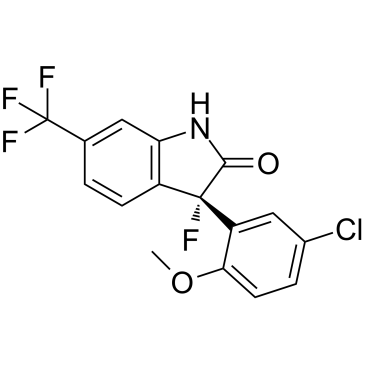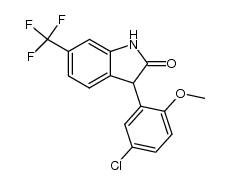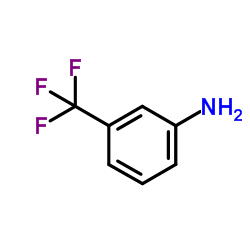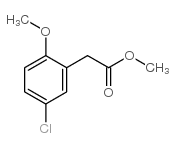MaxiPost

MaxiPost structure
|
Common Name | MaxiPost | ||
|---|---|---|---|---|
| CAS Number | 187523-35-9 | Molecular Weight | 359.70300 | |
| Density | 1.5g/cm3 | Boiling Point | 436.9ºC at 760mmHg | |
| Molecular Formula | C16H10ClF4NO2 | Melting Point | N/A | |
| MSDS | Chinese USA | Flash Point | 218ºC | |
| Symbol |

GHS07 |
Signal Word | Warning | |
Use of MaxiPostFlindokalner (BMS-204352) is a potassium channel modulator. Flindokalner is a positive modulator of all neuronal Kv7 channel subtypes expressed in HEK293 cells. Flindokalner is also a large conductance calcium-activated K channel (BKca) positive modulator. Flindokalner shows a negative modulatory activity at Kv7.1 channels (Ki=3.7 μM), and acts as a negative modulator of GABAA receptors. Flindokalner shows anxiolytic efficacy in vivo[1][2]. |
| Name | (3S)-3-(5-chloro-2-methoxyphenyl)-3-fluoro-6-(trifluoromethyl)-1H-indol-2-one |
|---|---|
| Synonym | More Synonyms |
| Description | Flindokalner (BMS-204352) is a potassium channel modulator. Flindokalner is a positive modulator of all neuronal Kv7 channel subtypes expressed in HEK293 cells. Flindokalner is also a large conductance calcium-activated K channel (BKca) positive modulator. Flindokalner shows a negative modulatory activity at Kv7.1 channels (Ki=3.7 μM), and acts as a negative modulator of GABAA receptors. Flindokalner shows anxiolytic efficacy in vivo[1][2]. |
|---|---|
| Related Catalog | |
| Target |
Ki: 3.7 μM (Kv7.1), 230 μM (Kv7.4), 605 μM (Kv7.5)[1] |
| In Vitro | Flindokalner (BMS-204352) (10 μM) inhibits Kv7.4and Kv7.5 with Kis of 230 and 605 μM, respectively[1]. Flindokalner (1-10 μM) causes inhibition of the Ca2+ current in a dose-dependent manner, with a Kd of 6 μM and a Hill coefficient of 1.33. Flindokalnerinhibits cardiac L-type Ca2+ channels in a direct manner, without affecting BKCa channels or intracellular signal transduction, in freshly isolated rat ventricular myocytes[2]. |
| In Vivo | Flindokalner (BMS-204352) (3-30 mg/kg; i.p.) induces a dose-dependent anxiolytic effect[1]. In shock-based conditioned model of anxiety in male Wistar rats, Flindokalner (3-60 mg/kg; i.p.) engenderes an anxiolytic profile[1]. Animal Model: Female NMRI or male C57 mice (20-25 g) (Anxiolytic Models)[1] Dosage: i.p. Administration: 3, 10, 30 mg/kg Result: Significantly and dose dependently increased time spent in the open areas, reduced latency to enter an open area, and increased the number of entries in to the open areas in Zero Maze. |
| References |
| Density | 1.5g/cm3 |
|---|---|
| Boiling Point | 436.9ºC at 760mmHg |
| Molecular Formula | C16H10ClF4NO2 |
| Molecular Weight | 359.70300 |
| Flash Point | 218ºC |
| Exact Mass | 359.03400 |
| PSA | 38.33000 |
| LogP | 4.67060 |
| Vapour Pressure | 7.82E-08mmHg at 25°C |
| Index of Refraction | 1.574 |
| Symbol |

GHS07 |
|---|---|
| Signal Word | Warning |
| Hazard Statements | H315-H319-H335 |
| Precautionary Statements | P280-P304 + P340 + P312-P305 + P351 + P338-P337 + P313 |
| RIDADR | NONH for all modes of transport |
| RTECS | NM3249000 |
|
~81% 
MaxiPost CAS#:187523-35-9 |
| Literature: Bristol-Myers Squibb Company Patent: EP946173 B1, 2005 ; Location in patent: Page/Page column 12 ; |
|
~83% 
MaxiPost CAS#:187523-35-9 |
| Literature: Li, Jun; Cai, Yunfei; Chen, Weiliang; Liu, Xiaohua; Lin, Lili; Feng, Xiaoming Journal of Organic Chemistry, 2012 , vol. 77, # 20 p. 9148 - 9155,8 Title/Abstract Full Text Show Details Li, Jun; Cai, Yunfei; Chen, Weiliang; Liu, Xiaohua; Lin, Lili; Feng, Xiaoming Journal of Organic Chemistry, 2012 , vol. 77, # 20 p. 9148 - 9155 |
|
~% 
MaxiPost CAS#:187523-35-9 |
| Literature: Hamashima, Yoshitaka; Suzuki, Toshiaki; Takano, Hisashi; Shimura, Yuta; Sodeoka, Mikiko Journal of the American Chemical Society, 2005 , vol. 127, # 29 p. 10164 - 10165 |
|
~% 
MaxiPost CAS#:187523-35-9 |
| Literature: Hamashima, Yoshitaka; Suzuki, Toshiaki; Takano, Hisashi; Shimura, Yuta; Sodeoka, Mikiko Journal of the American Chemical Society, 2005 , vol. 127, # 29 p. 10164 - 10165 |
|
~% 
MaxiPost CAS#:187523-35-9 |
| Literature: Hamashima, Yoshitaka; Suzuki, Toshiaki; Takano, Hisashi; Shimura, Yuta; Sodeoka, Mikiko Journal of the American Chemical Society, 2005 , vol. 127, # 29 p. 10164 - 10165 |
|
~% 
MaxiPost CAS#:187523-35-9 |
| Literature: Hamashima, Yoshitaka; Suzuki, Toshiaki; Takano, Hisashi; Shimura, Yuta; Sodeoka, Mikiko Journal of the American Chemical Society, 2005 , vol. 127, # 29 p. 10164 - 10165 |
|
~% 
MaxiPost CAS#:187523-35-9 |
| Literature: Zoute, Ludivine; Audouard, Christophe; Plaquevent, Jean-Christophe; Cahard, Dominique Organic and biomolecular chemistry, 2003 , vol. 1, # 11 p. 1833 - 1834 |
|
~% 
MaxiPost CAS#:187523-35-9 |
| Literature: Zoute, Ludivine; Audouard, Christophe; Plaquevent, Jean-Christophe; Cahard, Dominique Organic and biomolecular chemistry, 2003 , vol. 1, # 11 p. 1833 - 1834 |
|
~% 
MaxiPost CAS#:187523-35-9 |
| Literature: Hewawasam, Piyasena; Gribkoff, Valentin K.; Pendri, Yadagiri; Dworetzky, Steven I.; Meanwell, Nicholas A.; Martinez, Eduardo; Boissard, Christopher G.; Post-Munson, Debra J.; Trojnacki, Joanne T.; Yeleswaram, Krishnaswamy; Pajor, Lorraine M.; Knipe, Jay; Gao, Qi; Perrone, Robert; Starrett Jr., John E. Bioorganic and Medicinal Chemistry Letters, 2002 , vol. 12, # 7 p. 1023 - 1026 |
| [14C]-Flindokalner |
| MaxiPost |
| (3S)-3-(5-Chloro-2-methoxyphenyl)-3-fluoro-6-(trifluoromethyl)-1,3-dihydro-2H-indol-2-one |
| (3S)-(+)-(5-chloro-2-methoxyphenyl)-1,3-dihydro-3-fluoro-6-(trifluoromethyl)-2H-indol-2-one |
| (S)-(+)-3-(5-chloro-2-methoxyphenyl)-3-fluoro-6-trifluoromethyl-1,3-dihydroindol-2-one |
| Flindokalner |
| Flindokalner [USAN:INN] |
| Maxipost (TN) |




![Ethyl 2-[2-(Boc-amino)-4-(trifluoromethyl)phenyl]-2-oxoacetate structure](https://image.chemsrc.com/caspic/305/159684-36-3.png)


![5-chloro-α-fluoro-2-methoxy-α-[2-nitro-4-(trifluoromethyl)-phenyl]benzeneacetic acid methyl ester structure](https://image.chemsrc.com/caspic/025/206194-00-5.png)